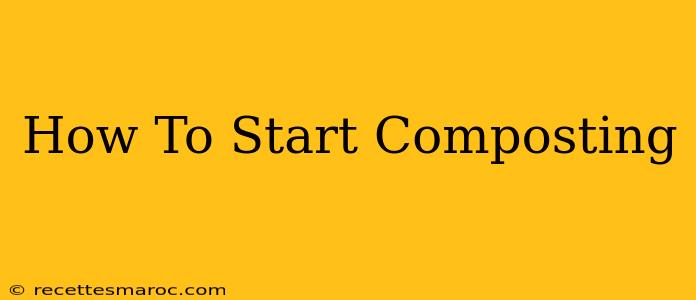Are you ready to dive into the rewarding world of composting? It's a fantastic way to reduce your environmental impact, enrich your garden, and save money on fertilizers. This beginner's guide will walk you through everything you need to know to get started, from choosing the right method to troubleshooting common problems.
Understanding the Composting Process
Composting is a natural process of decomposition where organic matter breaks down into nutrient-rich humus. This "black gold" is a gardener's dream, providing essential nutrients to plants and improving soil structure. The process relies on a balance of "greens" (nitrogen-rich materials) and "browns" (carbon-rich materials).
The Key Players: Greens and Browns
- Greens: These are typically moist and nitrogen-rich. Think grass clippings, fruit and vegetable scraps, coffee grounds, and tea bags.
- Browns: These are dry and carbon-rich. Examples include dried leaves, shredded paper, cardboard (without glossy coatings), and small twigs.
The ideal ratio is generally around 2:1 or 3:1 (browns to greens), but don't worry too much about precise measurements – you'll get a feel for it as you go.
Choosing Your Composting Method
Several methods cater to various needs and spaces:
1. The Simple Bin Method:
This is perfect for beginners! You can build your own bin from readily available materials like pallets or repurposed wire mesh, or buy a ready-made bin. Air circulation is key, so ensure your bin has adequate ventilation. Regular turning (every few days) also helps speed up the decomposition process.
2. The Compost Pile Method:
This is the most straightforward approach. Simply create a pile of your greens and browns in a designated area of your yard. Again, regular turning is crucial. This method works best in areas with good drainage.
3. Worm Composting (Vermicomposting):
This method uses worms (like red wigglers) to break down organic waste in a container. It's ideal for smaller spaces and produces a high-quality liquid fertilizer (worm tea) as a byproduct. This method requires more attention to moisture levels.
What to Compost and What to Avoid
Compostable Materials:
- Fruit and vegetable scraps
- Coffee grounds and filters
- Tea bags (remove staples)
- Eggshells
- Grass clippings
- Dried leaves
- Shredded paper and cardboard (uncoated)
- Sawdust (untreated)
- Wood chips (untreated)
Materials to Avoid:
- Meat, bones, and dairy products (attract pests and create foul odors)
- Oily or greasy foods
- Diseased plants
- Pet waste (can contain harmful pathogens)
- Treated wood
- Glossy or colored paper
- Plastics and other non-biodegradable materials
Maintaining Your Compost
- Moisture: Your compost should be as moist as a wrung-out sponge. Add water if it's too dry.
- Aeration: Turning your compost regularly allows for oxygen circulation, essential for decomposition.
- Carbon-Nitrogen Balance: Pay attention to the ratio of greens and browns. If your pile smells foul, you likely have too many greens. If it's too slow to decompose, it might need more greens.
Troubleshooting Common Composting Problems
- Foul Odor: Too much nitrogen (greens). Add more browns.
- Slow Decomposition: Not enough moisture or aeration. Turn more frequently and add water.
- Pest Problems: Make sure your compost pile is properly maintained and avoid adding inappropriate materials.
Reap the Rewards of Your Home Compost
Once your compost is dark brown and crumbly (it can take several months), it's ready to use! Use it to enrich your garden soil, helping your plants thrive. Composting is a simple yet impactful way to contribute to a healthier planet, and the rewards – both for your garden and your conscience – are immeasurable. Start your composting journey today!

